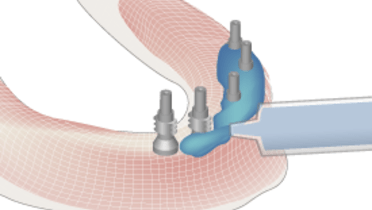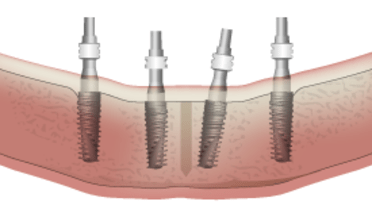-
0
Patient Assessment
- 0.1 Patient demand
- 0.2 Overarching considerations
- 0.3 Local history
- 0.4 Anatomical location
- 0.5 General patient history
-
0.6
Risk assessment & special high risk categories
- 5.1 Risk assessment & special high risk categories
- 5.2 age
- 5.3 Compliance
- 5.4 Smoking
- 5.5 Drug abuse
- 5.6 Recreational drugs and alcohol abuse
- 5.7 Parafunctions
- 5.8 Diabetes
- 5.9 Osteoporosis
- 5.10 Coagulation disorders and anticoagulant therapy
- 5.11 Steroids
- 5.12 Bisphosphonates
- 5.13 BRONJ / ARONJ
- 5.14 Radiotherapy
- 5.15 Risk factors
-
1
Diagnostics
-
1.1
Clinical Assessment
- 0.1 Lip line
- 0.2 Mouth opening
- 0.3 Vertical dimension
- 0.4 Maxillo-mandibular relationship
- 0.5 TMD
- 0.6 Existing prosthesis
- 0.7 Muco-gingival junction
- 0.8 Hyposalivation and Xerostomia
- 1.2 Clinical findings
-
1.3
Clinical diagnostic assessments
- 2.1 Microbiology
- 2.2 Salivary output
-
1.4
Diagnostic imaging
- 3.1 Imaging overview
- 3.2 Intraoral radiographs
- 3.3 Panoramic
- 3.4 CBCT
- 3.5 CT
- 1.5 Diagnostic prosthodontic guides
-
1.1
Clinical Assessment
-
2
Treatment Options
- 2.1 Mucosally-supported
-
2.2
Implant-retained/supported, general
- 1.1 Prosthodontic options overview
- 1.2 Number of implants maxilla and mandible
- 1.3 Time to function
- 1.4 Submerged or non-submerged
- 1.5 Soft tissue management
- 1.6 Hard tissue management, mandible
- 1.7 Hard tissue management, maxilla
- 1.8 Need for grafting
- 1.9 Healed vs fresh extraction socket
- 1.10 Digital treatment planning protocols
- 2.3 Implant prosthetics - removable
-
2.4
Implant prosthetics - fixed
- 2.5 Comprehensive treatment concepts
-
3
Treatment Procedures
-
3.1
Surgical
-
3.2
Removable prosthetics
-
3.3
Fixed prosthetics
-
3.1
Surgical
- 4 Aftercare
Closed versus open tray technique
Key points
- The open tray technique is specifically indicated when the implants are not sufficiently parallel to allow an impression to be withdrawn from multiple impression copings
- The closed tray impression technique is utilized when the implants are sufficiently parallel to each other
Open tray technique
The open tray technique for making a definitive impression is one of two choices (the other being a closed tray impression) in the fabrication of a fixed complete denture. The open tray technique is specifically indicated, when the implants are not sufficiently parallel to allow an impression to be withdrawn from multiple impression copings.
The temporary copings can be connected using flowable composite, impression plaster or acrylic resin (Fig 1). Connecting the copings may assist in improving the accuracy of the definitive impression and cast and may facilitate fabrication of a verification jig.
The impression tray is coated with adhesive and loaded with heavy-body impression material. Concurrently light-body impression material is expressed around the copings to capture the morphology of the soft tissue (Fig 2). Monophase impression material can be used as a convenient and practical alternative to the combination of heavy-body and light-body consistency. The loaded custom tray is placed and a finger or Q-tip is used to wipe across the occlusal opening to expose the occlusal aspect of the copings so their screws can be located before polymerization of the impression material occurs and for subsequent easy access for loosening.
After the impression material polymerizes, the screws in the temporary copings are loosened and the impression removed. The impression should record the edentulous ridges and contains the temporary or impression copings (Fig 3). An alternate approach would be to make the definitive impression using a modified stock tray. Implant analogs are fastened to the copings and then the impression is sent to the laboratory for the fabrication of the definitive cast and occlusion rim.
Closed tray technique
The closed tray impression technique is utilized:
- When the implants are sufficiently parallel to each other
- In situations with limited interarch distance and insufficient space for use of screw-retained impression copings
A stock tray or a custom tray can be used in the fabrication of a closed tray impression for a fixed complete denture. Closed tray impression copings are placed on implants or multi-unit abutments and the impression made (Fig 4). Once the impression material polymerizes the impression is dislodged from the closed tray impression copings. The closed tray impression copings are then removed and implant or abutment analogs attached to the copings. The combined coping-analog assembly is then inserted into the definitive impression.



